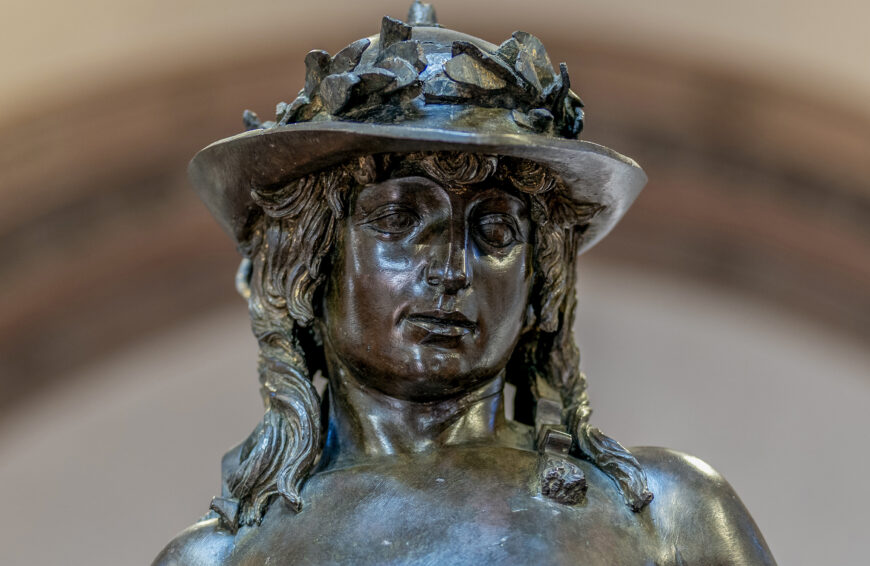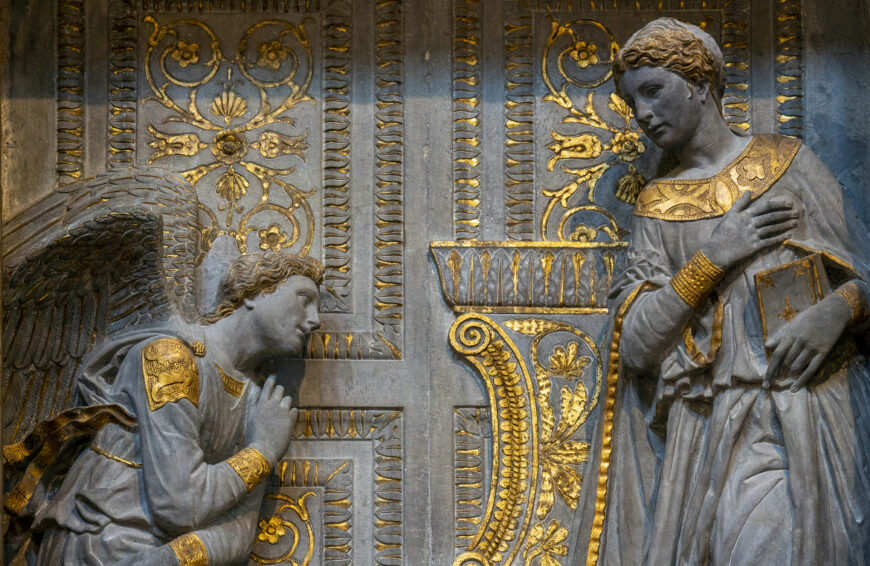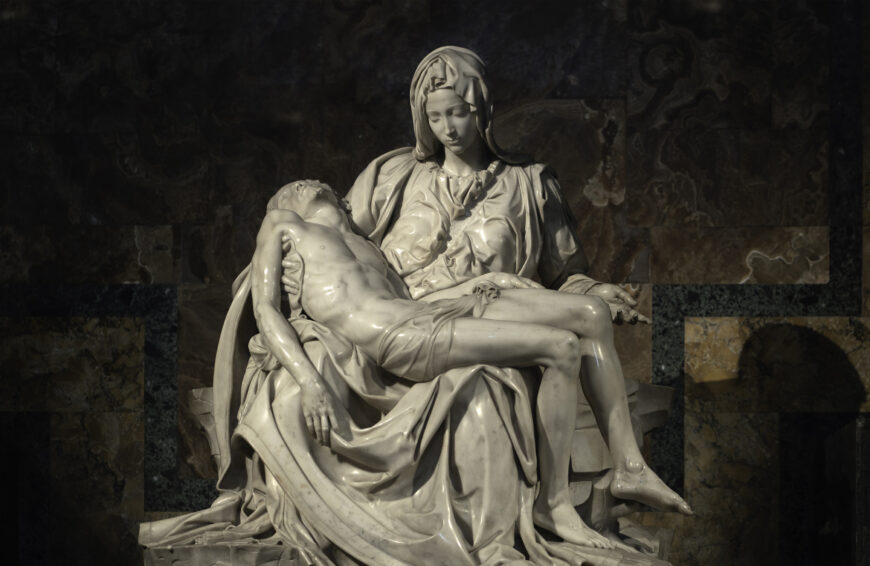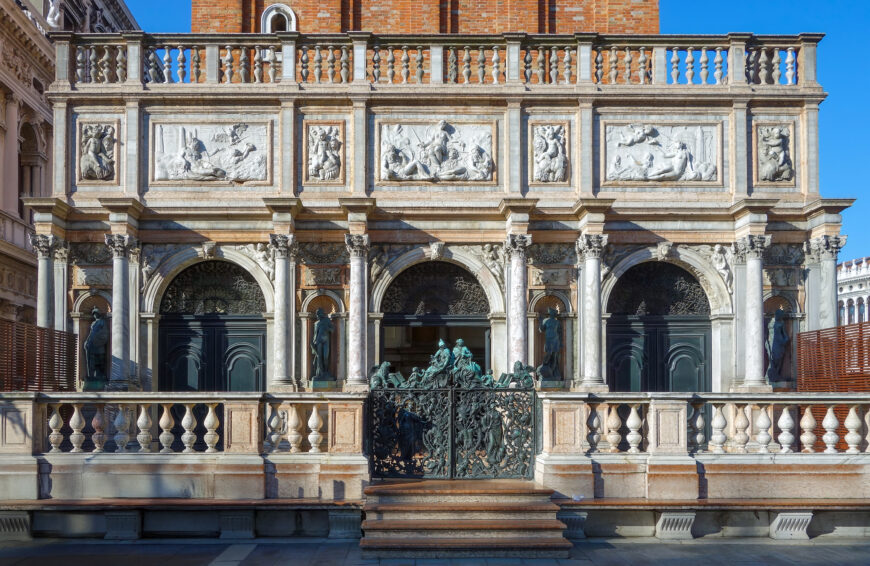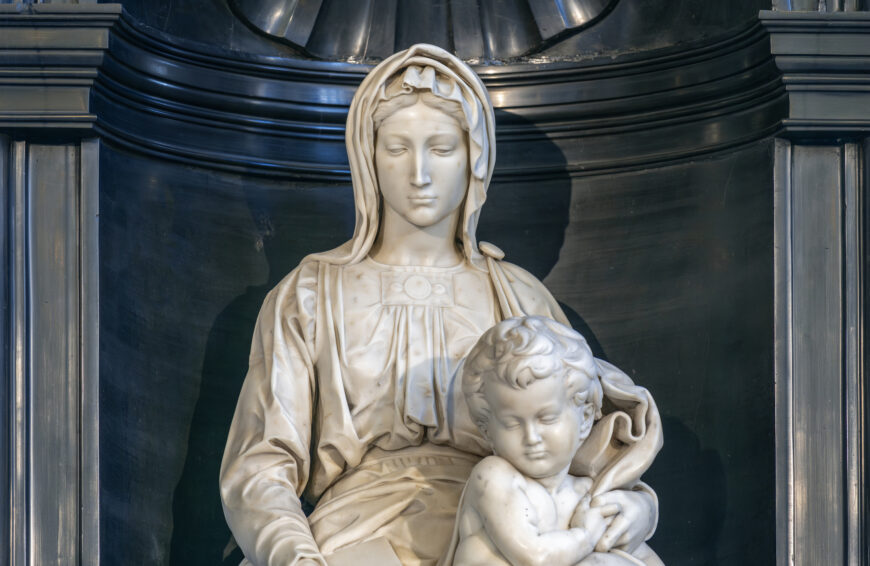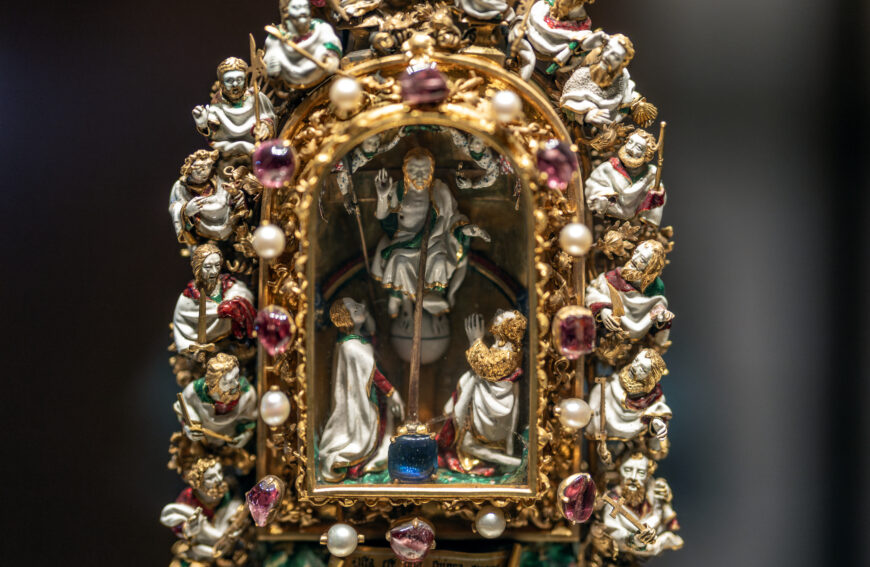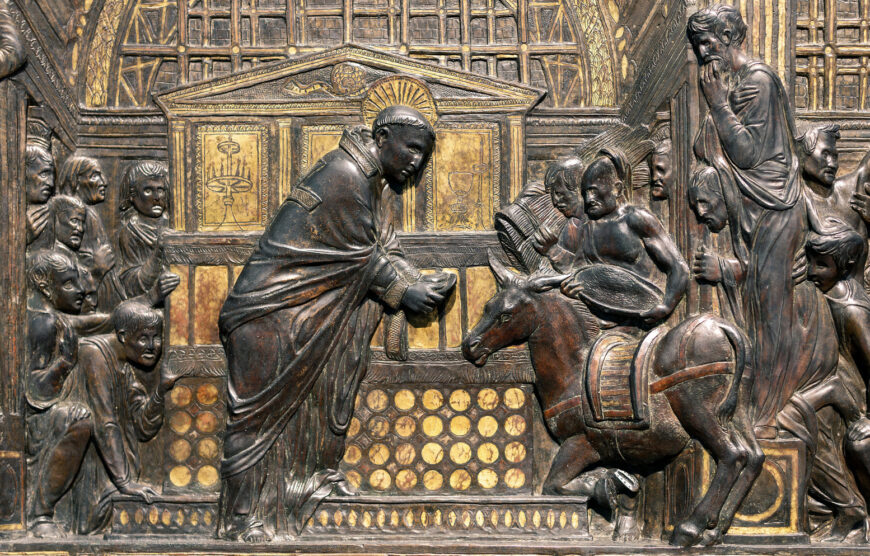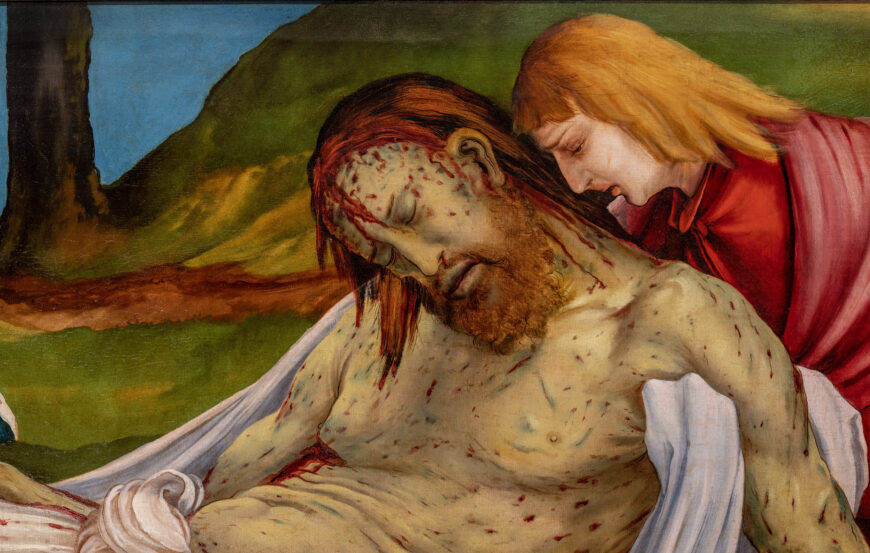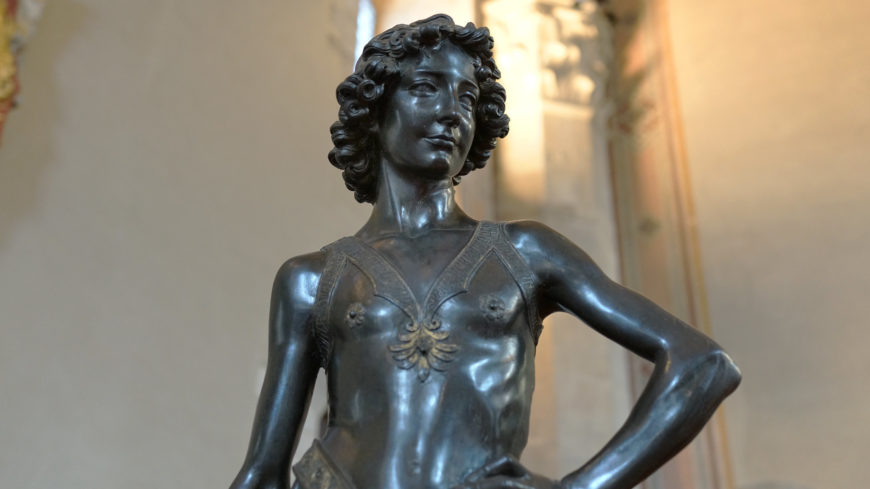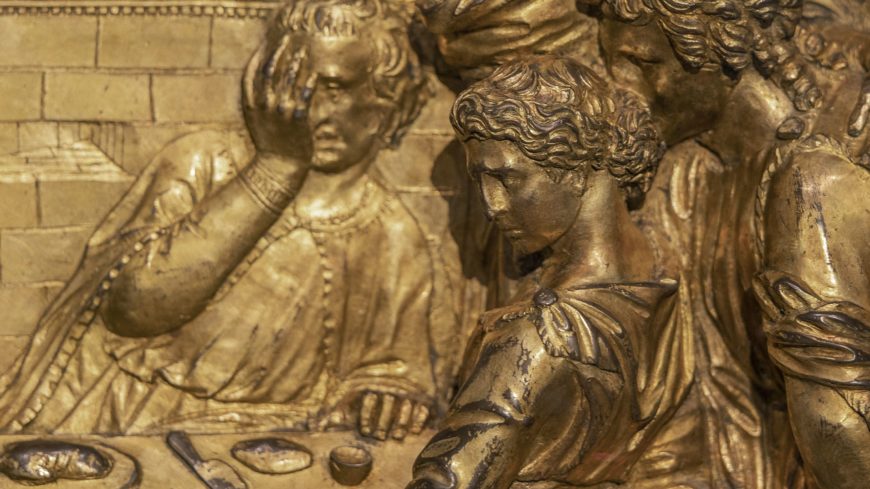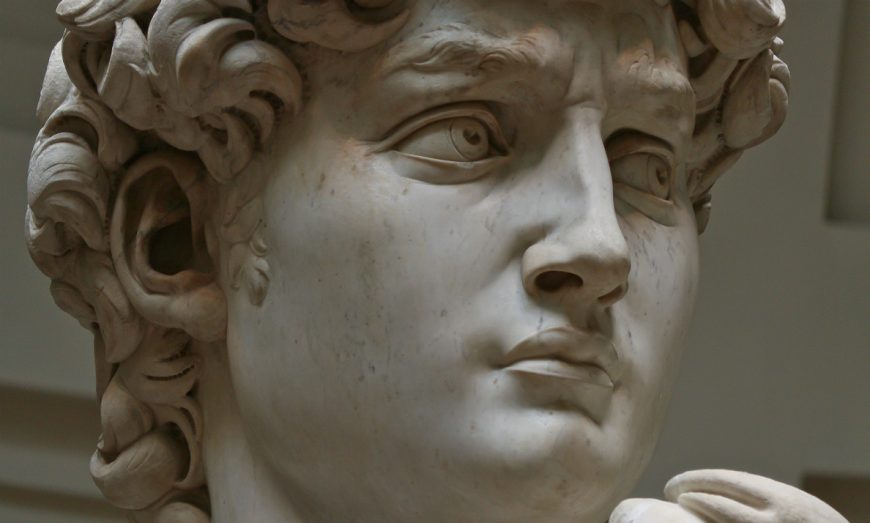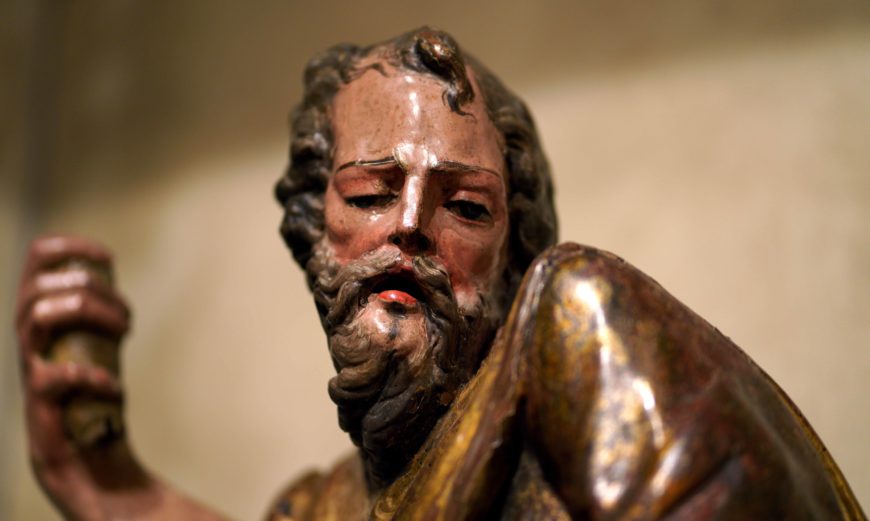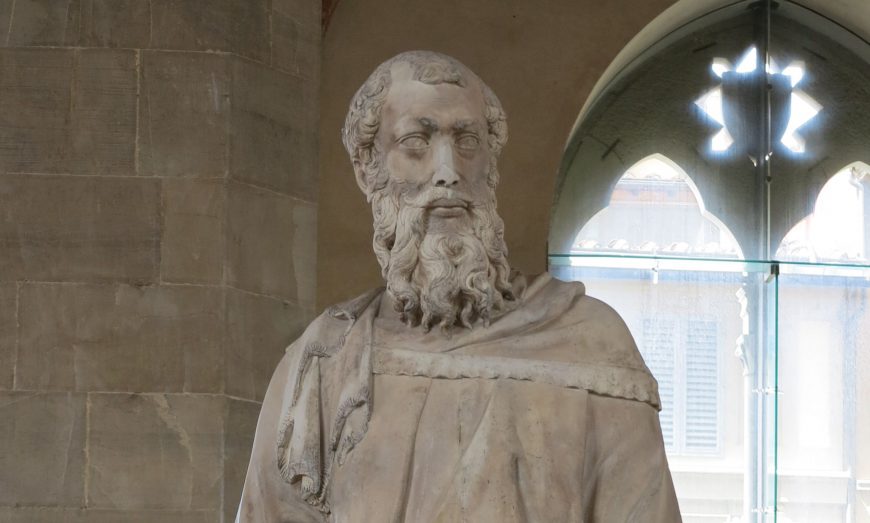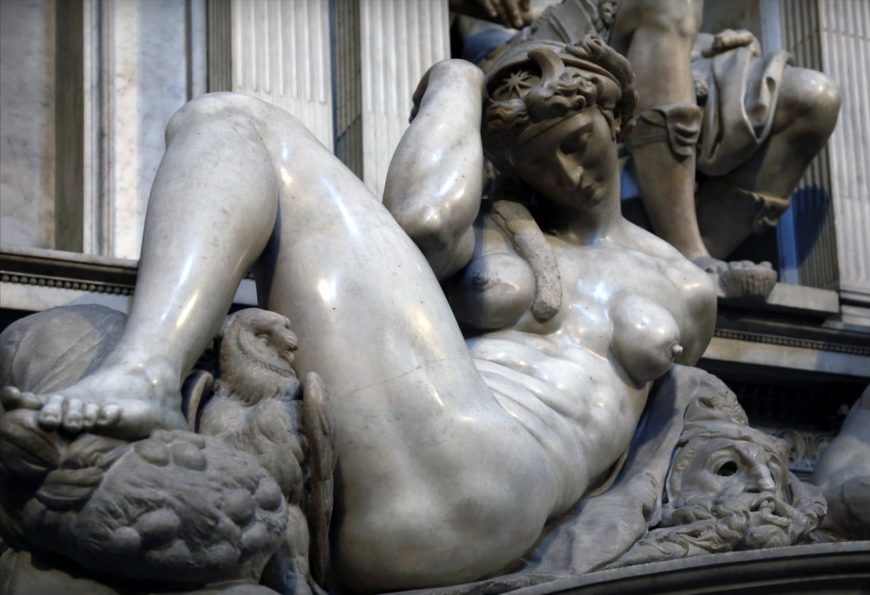Grieving angels and individualized prophets once inspired prayers at this well-funded Carthusian monastery.
Claus Sluter (with Claus de Werve), The Well of Moses, 1395–1405 (Calvary finished 1399, prophets 1402–05, painted by Jean Malouel c. 1402), Asnières stone with gilding and polychromy, slightly less than 7 meters high, originally close to 13 meters with cross
This work is located on the grounds of the former Chartreuse de Champmol, a Carthusian monastery in Dijon, France, established by Philip the Bold, Duke of Burgundy. The prophets depicted include: Moses, David, Jeremiah, Zachariah, Daniel, and Isaiah.


